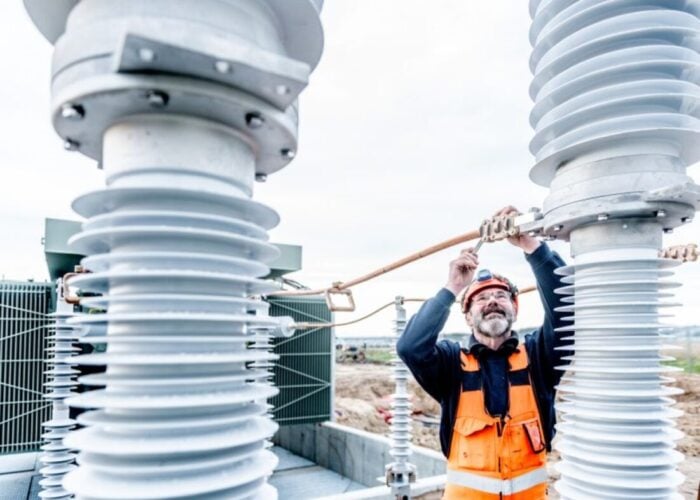Norwegian manufacturer REC’s division into REC Solar and REC Silicon has made it possible for the company to “invest heavily in research and development again”, according to REC Solar’s senior vice president for sales and marketing, Luc Graré.
Talking to PV Tech at Solar Energy UK 2013, Graré said resolution of the split and improving market conditions had made it possible for REC to invest in research and development, after “it stopped [in the industry] for a few years”.
Unlock unlimited access for 12 whole months of distinctive global analysis
Photovoltaics International is now included.
- Regular insight and analysis of the industry’s biggest developments
- In-depth interviews with the industry’s leading figures
- Unlimited digital access to the PV Tech Power journal catalogue
- Unlimited digital access to the Photovoltaics International journal catalogue
- Access to more than 1,000 technical papers
- Discounts on Solar Media’s portfolio of events, in-person and virtual
Graré said the key factor allowing the new investment possibility was the drop in silicon production costs. “About two years before, [silicon] prices were below production costs, so you operated at a loss – now a profit can be made again, like this Q2 we made a profit,” he said.
REC’s ambition to advance technological development was underlined by its exhibiting a half-cut solar cell at Solar Energy UK 2013 in Birmingham this week.
Graré explained REC has cut the cells used in normal 60-cell panels in half to make the demonstration module. This has cut power loss in the module and boosted its power by 5W from 265W to 270w.
“Advances in technology, such as half-cut cells, are vital steps in bringing the most innovative solar technology to all segments – residential, commercial and industrial as well as large-scale power plants,” said Graré.
Split benefits
With REC Solar having been floated on the Oslo stock exchange, Graré said REC Solar could now start operating debt free, thanks to “new shareholder interest and capital increases for both companies”.
As REC’s silicon manufacturing only uses 28% of the 20,000 tonnes of silicon it produces every year for module production, with the rest being exported, mainly to China, REC decided to split the company’s operations. Graré said the main benefit of splitting the company was greater flexibility for finance and the ability for both companies to grow.
REC Silicon will be based in Washington in the US, and REC Solar will be based in Singapore, with the current Oslo headquarters downsizing. Some employees will move to the US or Singapore, but no jobs will be lost, Graré insisted.
REC currently uses Norwegian banks, but Graré revealed the two new entities are considering US and Singapore banks, as well as mergers and acquisitions “in the coming years”.
In future Graré said REC Silicon is hoping to continue to grow its expertise and knowledge, “there are lots of possibilities.” Referring to a trend of other companies, including First Solar and SunPower, also splitting divisions, Graré said in the past silicon has been “very strong” but as “there is so much [silicon] on market now”, in the future if silicon demand grows “we could see silicon golden days again” says Graré.
For REC Solar, Graré said the main market would be Europe, accounting for some 40-50% of sales, Japan 25% and the remaining to be US and Asia Pacific customers, with no modules being sold to China.
Although developers are struggling to build large projects in Germany, Graré said the UK was still a “very good” market for the company. “In the UK we are selling modules; there is a strong rush to finalise large-scale solar,” Graré said.
“The UK solar market has great potential for growth and we are confident new solutions such as [the half -cut cell] will help support large-scale adoption of solar power.”
Shareholder deal
Current shareholders can buy shares in REC Solar, with a ratio of 58:1, for swapping old shares for new. Any remaining shares after the 26 October will go to remaining shareholders who have committed to buying any shares left after that date, guaranteeing REC Solar’s entry to the Oslo stock market.
Regarding shareholder concerns of changes within the company, Graré said: “When we talk with customers, they don’t care as long as the company and the people are the same.” He stressed that REC was not re-branding but keeping the same name.
The transition into two separate entities should be complete by the end of October.







